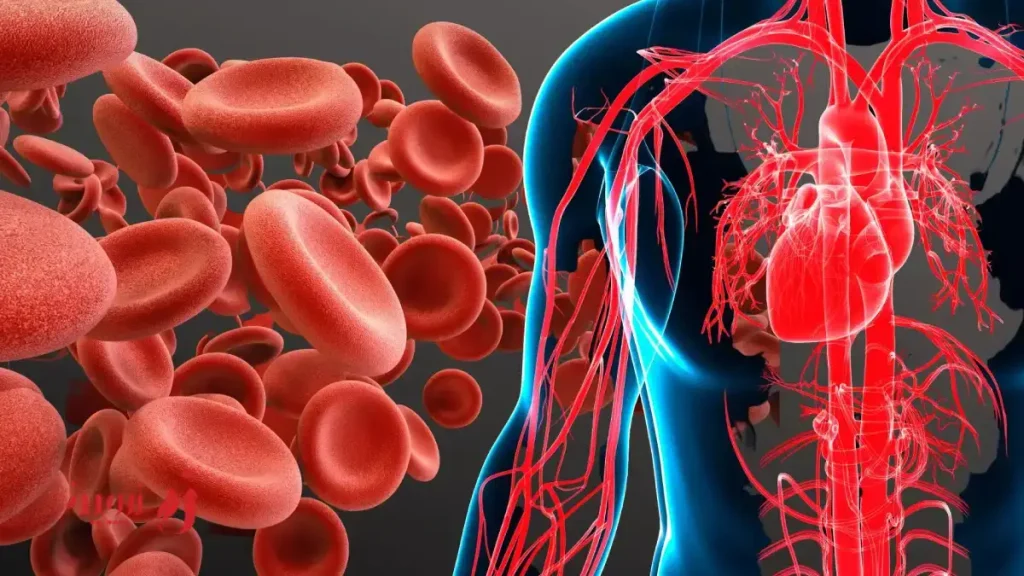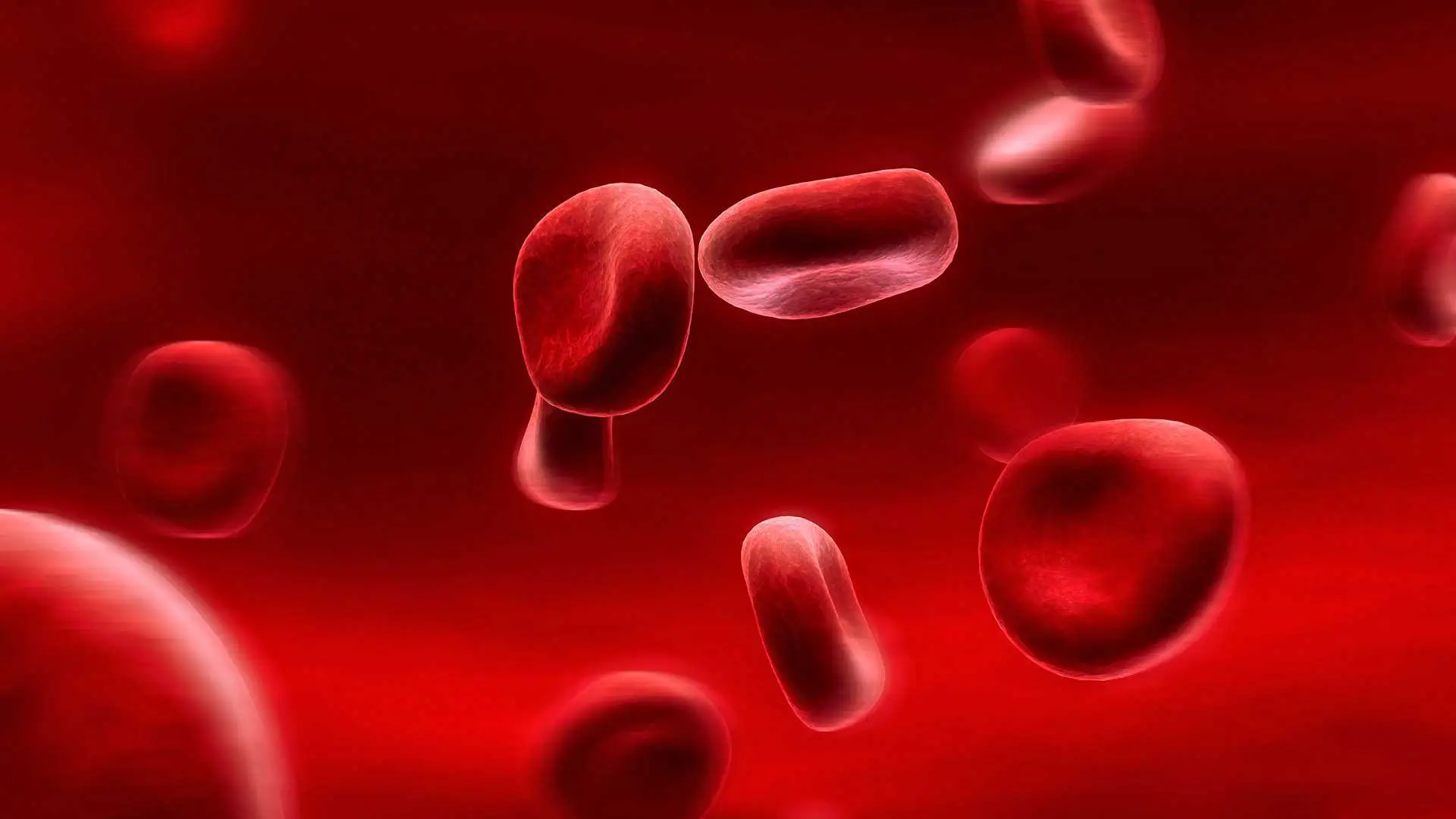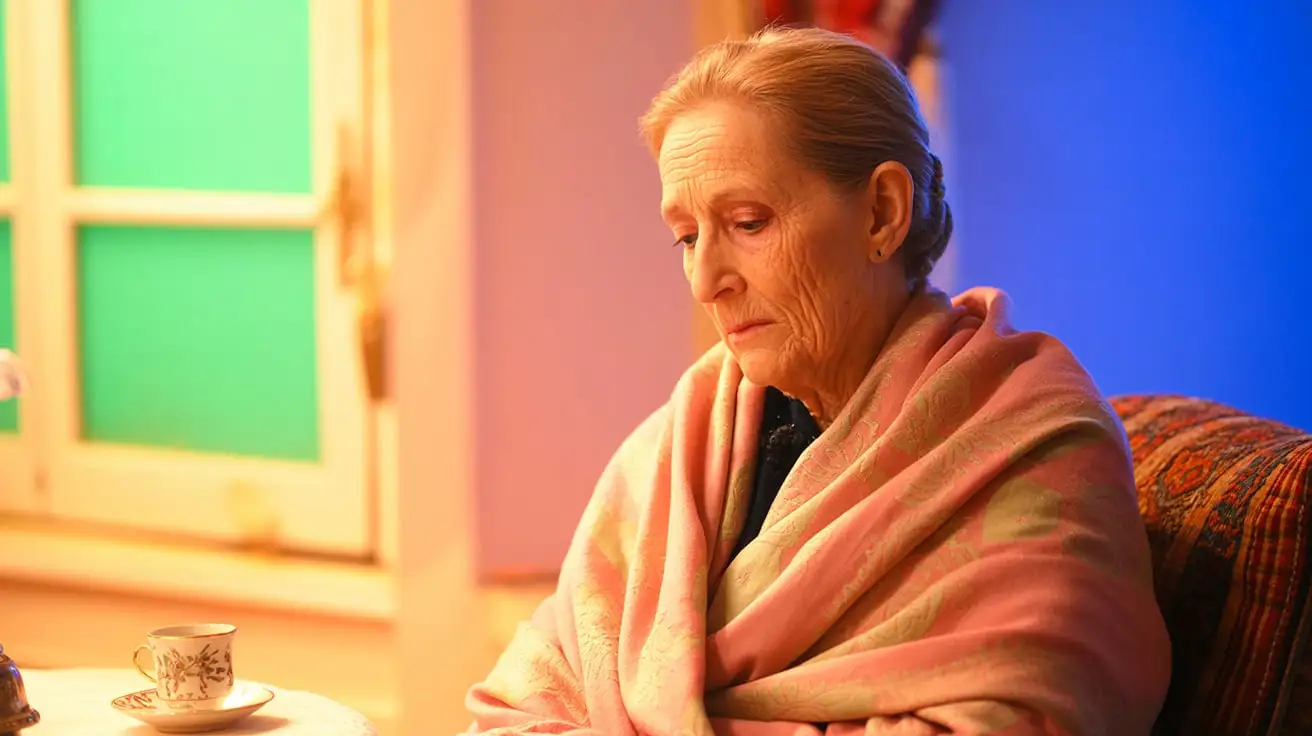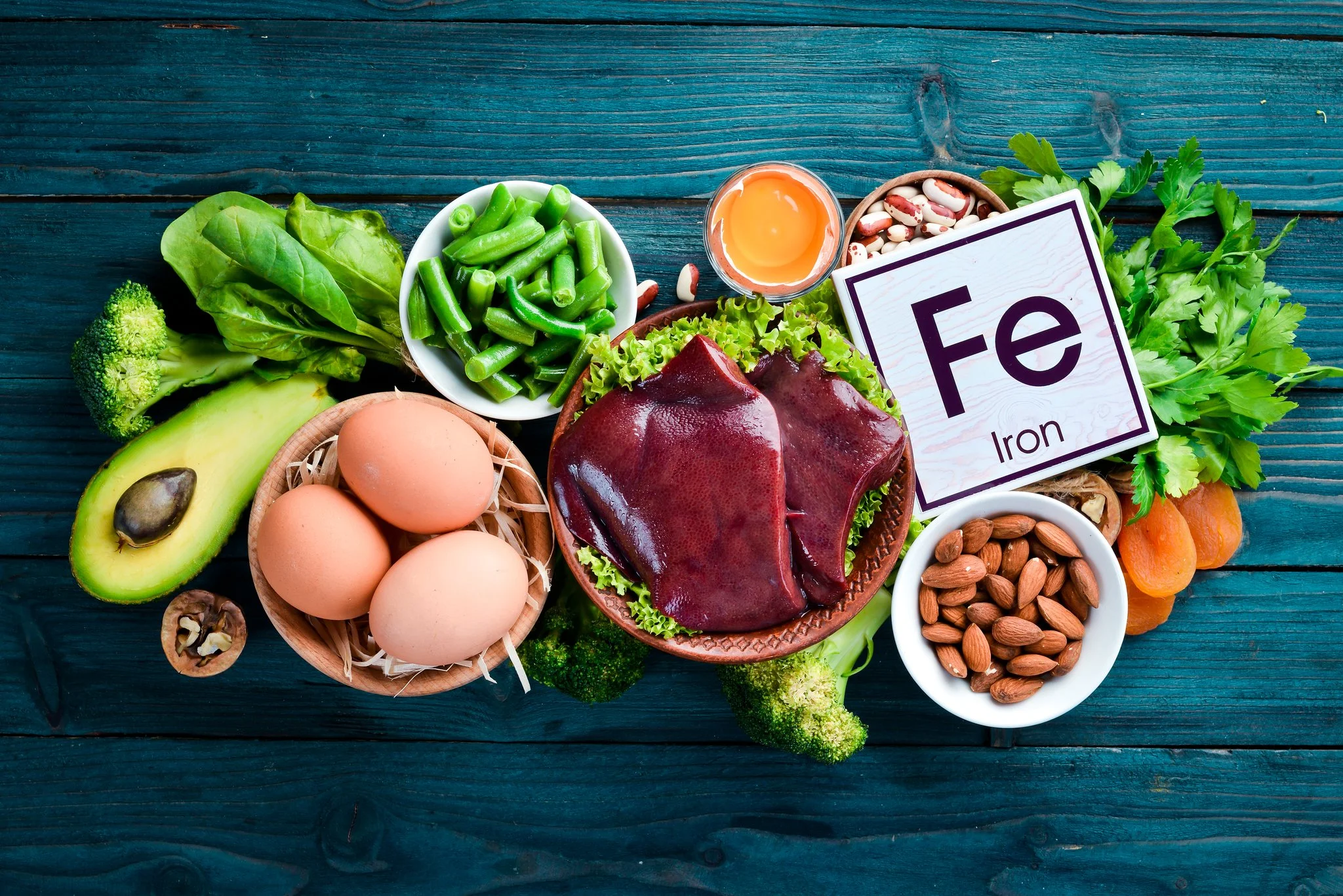
Causes of Anemia in the Elderly + Blood-forming Foods
Anemia in the elderly, like other common problems in this age group, is one of the things that must be treated. As we age, the human body faces numerous changes in the functioning of its vital systems, one of the most important of which is a decrease in hemoglobin levels and the development of a common disease called anemia. Contrary to popular belief, anemia in the elderly does not only mean fatigue or weakness; it can also be a warning sign of heart disease, reduced quality of life, a weakened immune system, and even dementia.
Given the physiological and nutritional differences of the elderly compared to other age groups, understanding the symptoms, causes, and ways to treat anemia in this period of life becomes doubly important. Also, with age, many physiological functions of the human body undergo changes that affect general health. One of the common problems in old age is anemia. This condition is referred to as a decrease in the number of red blood cells or the amount of hemoglobin in the blood, which can lead to reduced oxygen delivery to tissues and organs.
The elderly are more susceptible to anemia due to reduced metabolism, poor absorption of nutrients, and chronic diseases. In this article from humanhealthmag, we will explain the causes, symptoms, diagnosis, treatment, and prevention of anemia in the elderly. We will also introduce nutritional and healthy lifestyle strategies to deal with this problem.
Anemia and Normal Hemoglobin in the Elderly
Anemia in the elderly is a condition in which the number of red blood cells, or hemoglobin levels, in the blood is lower than normal. Hemoglobin is a protein in red blood cells that carries oxygen from the lungs to the body’s tissues. When this transport is not done properly, a person experiences weakness, fatigue, shortness of breath, and other symptoms. Normal hemoglobin levels are as follows:
- Men: 13.5 to 17.5 grams per deciliter
- Women: 12 to 15.5 grams per deciliter
Elderly people may experience more serious symptoms even with a mild decrease in hemoglobin because their bodies are less able to compensate for this deficiency. Normal hemoglobin in middle age plays an important role in maintaining the shape of red blood cells in their normal shape. Therefore, its departure from the normal state and level can disrupt the working process of red blood cells and prevent their function and flow in the blood vessels.
Men’s hemoglobin in middle age should be between 12.4 and 14.9 grams per deciliter, and women’s normal hemoglobin in this age period is calculated to be about 11.7 to 13.8 grams per deciliter. Keep in mind that these values can sometimes be different. Just as the diet for Alzheimer’s patients must be specific, anemic patients must also observe their nutrition.

Different Types of Anemia in the Elderly
Anemia in the elderly can have different types, and the most important of them are:
- Iron deficiency anemia: Iron deficiency and anemia are not common in the elderly, but the cause of anemia in the elderly is mostly diseases and bleeding that may be caused by some diseases. Iron deficiency anemia is the most common anemia. The symptoms of iron deficiency in the elderly are not only chronic fatigue, but it can also disrupt the function of one of the most important organs in the body during old age. High blood iron levels protect and strengthen the heart and prevent some cardiovascular diseases in the elderly.
- Anemia due to chronic diseases: Some diseases such as kidney failure, rheumatoid arthritis, or cancer disrupt the production of red blood cells.
- Megaloblastic anemia: Caused by a deficiency of vitamin B12 or folic acid. This type of anemia is characterized by large, immature red blood cells.
- Hemolytic anemia: A rare type of anemia in which red blood cells are abnormally destroyed. This disease may have autoimmune or drug causes.
Symptoms of Normal Hemoglobin Changes in Middle Age
Anemia in the elderly occurs for various reasons. Symptoms of normal hemoglobin changes in middle age can vary somewhat depending on the severity and cause of the changes, however, if we want to discuss the general signs and symptoms of these changes, we can mention the following:
- Weakness
- Headache
- Shortness of breath
- Feeling tired
- Pain in the chest
- Cold hands and feet
- Irregular heartbeat
- Pale skin
- Tendency of the skin to turn yellow
- Feeling dizzy and lightheaded
Remember that at the beginning of hemoglobin leaving the normal state in middle age, it is possible that the symptoms are so mild that you do not notice them at all, but as the amount and severity of the symptoms increase, you can notice a more severe increase or decrease in your blood hemoglobin.
Causes of Anemia in the Elderly
Iron is an essential element for the production of red blood cells and hemoglobin, and its deficiency can lead to anemia in the elderly. As we age, stomach acid decreases, and as a result, iron absorption (especially non-heme plant iron) decreases significantly. Elderly people who have gastric atrophy (reduced stomach acid secretion) or Helicobacter pylori infection usually do not absorb iron well. Also, taking certain medications, such as antacids or proton pump inhibitors (PPIs), also negatively affect iron absorption. Some of the key factors that cause anemia include:
- Reduced appetite and inadequate nutrient intake
- Reduced absorption of iron, vitamin B12, and folic acid due to changes in the digestive tract
- Taking multiple medications that may interfere with nutrient absorption
- Chronic diseases such as kidney failure, heart disease, or cancer
- Hidden internal bleeding from the digestive tract
These factors together make the elderly more likely to develop anemia and more susceptible to it. Considering the relationship between elderly nutrition and diseases, modifying the nutritional practices of the elderly and having a proper diet can greatly help treat anemia in the elderly.

Symptoms of Anemia in Seniors
Remember that at the beginning of hemoglobin out of normal in middle age, the symptoms may be so mild that you do not notice them at all, but as the number and severity of symptoms increase, you can notice a more severe increase or decrease in your hemoglobin. Diagnosing the symptoms of anemia in the elderly is challenging because they are similar to the symptoms of aging and other diseases. However, some symptoms are commonly observed:
- General weakness and feeling of extreme fatigue
- Pale or yellow skin
- Irregular heartbeat or heart rate
- Shortness of breath even with light activity
- Cold hands and feet
- Dizziness or fainting
- Frequent headaches
- Loss of appetite
Sometimes the elderly may experience only one or two symptoms. Therefore, the attention of families and caregivers is very important. In addition to the common symptoms, some symptoms may indirectly indicate anemia:
- Sleep disturbances and frequent nighttime awakenings
- Decreased mental capacity and memory
- Behavioral changes such as aggression or depression
- Sudden loss of balance or falling
- Unexplained restlessness or anxiety
Note that in the elderly, these symptoms can be very misleading and attributed to other diseases.
Differences in Anemia Symptoms in Elderly Women and Men
In this section, we examine the differences in anemia in the elderly between men and women:
| Sign/Characteristic | Elderly men
|
Elderly women |
| Fatigue and weakness | Usually more severe in advanced stages | More common, with menopausal symptoms |
| Shortness of breath | More in everyday activities | May be underreported |
| Dizziness and headache | Less common, but seen in severe cases | It occurs more often. |
| Pale skin | Less visible but it exists | Common and visible |
| Heart problems | Higher chance of heart failure | More like a heartbeat |
Cause of Anemia in the Elderly (Low Hemoglobin)
In the above material, we briefly explained the causes of anemia in the elderly. Now we want to know what is the cause of severe anemia in elderly men and women? The most important causes of this disease are:
- Lack of sufficient iron in the diet: A major cause of anemia in the elderly and young is the lack of dietary compliance and consumption of the best foods for anemia in the nutrition of the elderly. It can even be said that treating anemia with herbal medicines is also possible.
- Blood loss during monthly menstruation in women: This factor is an important factor that causes symptoms of anemia in women. Another time anemia can occur is anemia during pregnancy.
- Blood loss by donating blood: Donating blood is a good deed and a necessity for some people. But it can cause anemia in the elderly. For this reason, less blood is taken from this group.

- Blood loss due to internal bleeding: Stomach ulcers in the elderly, cancer in the elderly, and kidney and bladder tumors, excessive use of nonsteroidal anti-inflammatory drugs such as aspirin and ibuprofen (which cause bleeding from the stomach and intestines), hemorrhoids, colon polyps, uterine fibroids, hiatal hernia, and colon cancer can cause internal bleeding and iron deficiency in the elderly. Internal bleeding is seen as the presence of blood in the urine and stool (black stool).
- Inability to absorb iron: Iron is absorbed through the small intestine. In some intestinal disorders in the elderly, such as Crohn’s disease, the absorption of nutrients in the intestines is impaired, causing iron deficiency. Also, surgical removal of part of the intestine reduces iron absorption.
- Interference with iron absorption: Simultaneous consumption of certain foods with iron food sources reduces iron absorption. The cause of anemia in healthy men and women who have gone through menopause is most likely internal bleeding. In the diet to prevent anemia in the elderly, use cereals, sprouted legumes, as much meat as possible and other food sources containing iron. Consuming sprouted cereals and legumes increases iron absorption by at least two times. Use various nuts such as pistachios, almonds, walnuts and hazelnuts, which are good sources of iron, as snacks for the elderly.
How to Prevent Anemia in Older Adult
Anemia in the elderly is one of the complications that can be prevented by following small tips. Among the ways to prevent anemia in the elderly are the following:
- Using bread with risen dough
- Using foods rich in iron
- Using sprouted grains and legumes
- Resolving digestive problems and constipation
- Washing and disinfecting vegetables
- Including red meat, fish or chicken in the diet
- Avoiding drinking tea or coffee with or immediately after meals
- Washing hands thoroughly before preparing and consuming food and after each bowel movement.
- Correcting incorrect eating habits, which are themselves symptoms of iron deficiency anemia.
- Consulting with a doctor or nutritionist for timely prevention or improvement of anemia.
- Using food sources containing vitamin C at each meal for better iron absorption.
- Using dried fruits such as dried berries, plum leaves, dried figs and raisins, which are good sources of iron.
Treatment of Anemia in the Elderly
In the rest of this article, we intend to introduce you to plants and herbal sprouts that are useful in treating anemia in the elderly and that are rarely paid attention to by the elderly nurse, but these plants are undoubtedly one of the wonders of nature in treating anemia and low platelets in the elderly. Of course, do not forget that the therapeutic properties of these plants are unique in their own way and can even be a good alternative to expensive nutritional supplements.
These plants include clover sprouts, or simply alfalfa. This plant, which was one of the most widely used medicinal plants in traditional medicine in the past, has achieved a much higher position today than in the past and continues to be a leader in the field of competition against artificial and unnatural nutritional supplements that are used to treat anemia.

Blood-building Foods for the Elderly
Although taking iron pills can help treat anemia in the elderly to some extent, a healthy diet rich in iron can reduce the risks of iron deficiency anemia. Therefore, it is better to include the following foods in your healthy diet plan:
- Mangoes, pears, rhubarb, etc.
- Iron-fortified cereals
- Peas and green beans
- Legumes such as beans and lentils
- Seafood such as fish, shrimp, etc.
- Dried fruits such as raisins, dried apricots, etc.
- Dark green leafy vegetables such as spinach and broccoli
- White meat such as chicken, turkey, and ostrich
- Red meat (unless prohibited by your doctor)
Concluding Remarks
Anemia in the elderly does not mean a decrease in blood volume in these people, but rather the cause of anemia is low hemoglobin in the elderly or a decrease in the number of red blood cells. The symptoms and causes of anemia vary from person to person. This disease is usually caused by more complex and multiple factors such as chronic diseases, problems with nutrient absorption and the use of multiple medications, while in young people it occurs more often due to nutritional deficiencies or acute bleeding. Also, symptoms in the elderly may be more non-specific and gradual, which is why timely diagnosis and treatment are more difficult.
The elderly require more special care due to a weakened immune system and the impact of comorbidities. Given the sensitivity of the elderly’s digestive system, iron tablets with high absorption and less stomach irritation, such as ferrous fumarate or ferrous gluconate, are recommended. These tablets have fewer digestive side effects and are usually better tolerated. Taking iron supplements with vitamin C is useful to increase iron absorption. Be sure to consult a doctor before starting.
We’re curious to hear your thoughts! What’s your take on this topic? Comment below and join the conversation; your opinion could spark new ideas!

Frequently Asked Questions
What are the Causes of Anemia in Seniors?
One group is related to the lack of vitamins and minerals in the body. Our body needs a certain amount of vitamins and minerals throughout the day and night. Part of this need is met through eating and drinking. Some of these substances are also produced in the body. As people age, the supply of essential substances required by the body is disrupted. The second group is related to the physical conditions of people. With increasing age, the ground is prepared for the occurrence of chronic diseases. These diseases have a negative effect on the functioning of various parts of the body. One of these negative effects is anemia.
What is the Effect of Iron Deficiency Anemia on Heart Attack?
Experts have found that patients who have had a heart attack have low blood iron levels and symptoms of anemia are seen in them. If they use iron supplements or foods containing this essential substance, it can greatly help rebuild the heart muscle and prevent the recurrence of cardiovascular disease in them. In fact, it can be said that treating anemia helps treat heart attack patients.
What are the Complications of Anemia in Elderly?
The elderly normally lose some of their motor skills due to old age. Anemia exacerbates this problem. In a way that they lose the sense of doing their daily tasks. In addition to physical problems, mental complications such as depression also occur due to anemia. Although anemia does not cause severe physical problems, it should not be forgotten that anemia exacerbates the elderly’s inability to perform normal life activities, making them difficult and challenging.
